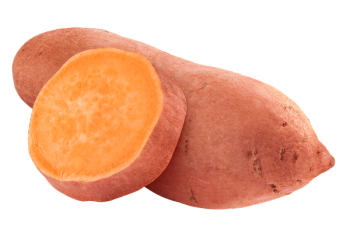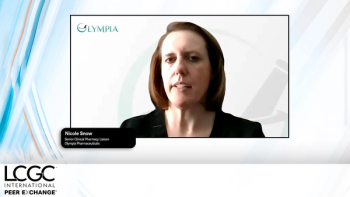
Planar Chromatography — Back to the Future?
Planar chromatography celebrates its 70th birthday. The technique dates back to 1938 when, at the Pharmaceutical Institute in Kharkov, Ukraine, N.A. Izmailov and M.S. Shraiber first devized a circular thin-layer chromatogram,1 which was called spread layer or spot chromatography at the time.
Planar chromatography celebrates its 70th birthday. The technique dates back to 1938 when, at the Pharmaceutical Institute in Kharkov, Ukraine, N.A. Izmailov and M.S. Shraiber first devized a circular thin-layer chromatogram,1 which was called spread layer or spot chromatography at the time.
It is often overlooked that TLC has developed into a high-performance method (HPTLC) that can compete in terms of speed with ultra-rapid high performance liquid chromatography (HPLC) methods. Planar chromatography saves money by solving difficult problems in a simple way. The application of effect-oriented detection combined with high resolution mass spectrometry (MS) can identify bioactive substances with harmful effects that are not observed by common target analysis techniques, such as HPLC–MS–MS.
Keeping Pace with Ultra-Rapid Separations
The benefits of HPTLC can be demonstrated by the analysis of sucralose in various dietary bakery products. A thousand chromatographic runs were performed in an eight-hour shift using this technique.2 Parallel chromatography (the development of 46 runs from both plate sides in one run of 15 min) and the stacked system (15 min-intervals of the step-stacked system) easily achieve high sample throughput. The resulting runs are complete within a 20 second time-frame with about 300 µL solvent consumption for each run.
This method compares favourably with rapid separations performed on the state-of-the-art ultra-rapid HPLC separations where, for example, a 2 min gradient would perform 720 runs in 24 hours. It even has some advantages over state-of-the-art instrumental methods — obviously not in terms of separation efficiency, but in terms of ingenuity. As the matrix compounds of milk, cakes, sweets, chocolate and drinks are strongly retarded at the origin of the adsorbent, rapid sample treatment is allowed. A heavy matrix fixed at the starting region does not matter in single-use HPTLC, but it does if fixed on an HPLC column because the matrix is continuously being enriched.
Figure 1(a)
Therefore, HPLC methods for sucralose analysis usually employ solid-phase extraction (SPE) for sample preparation, but this is not necessary for HPTLC (Figure 1). This simple method can certainly be used quantitatively and repeatable relative standard deviations (RSDs) of 0.5–4.0% in different cakes and biscuits were obtained.2 A limit of detection (DL) of 1 mg/kg in milk-based confectionary (without any concentration step) has been achieved, which fulfilled the required DLs for European legislation.3
Making Analysis Cost-Effective
HPTLC is cost-effective. A simple derivatization step allows the use of simple detectors for the detection of analytes without a chromophore. This avoids the general employment of expensive detectors such as the evaporative light scattering detector (ELSD), a corona charged aerosol detector (CAD) or a mass spectrometer (MS). For example, the routine analysis of sucralose is often performed by SPE with HPLC–ELSD,4 SPE with HPLC–MS–MS,5 or even HPLC–MS–MS using an isotope-labelled standard (sucralose-d6)6 . It is surprising that so many analysts ignore HPTLC–vis which can solve the task without any SPE clean-up. There is the common trend to underestimate the high selectivity offered by derivatization reactions. Consequently, there is a tendency to resort to increased sample preparation, expensive detectors or coupled chromatographic systems. The question should be, "How can I solve the analytical task best" and not "How can I solve it with the method I can do best".
Approximately 10–20% of the HPLC methods, depending on the application field, could be performed more cost-effectively if transferred to HPTLC. Why not use HPTLC if resolution is guaranteed by MS and UV-spectra purity, making a higher separation efficiency not really necessary?
Figure 1(b)
The Role of "Retro" TLC
It is surprising that TLC is so widely under-valued and regarded as antiquated. Most analysts do not use the method's full potential. Most TLC applications are aimed at the screening stage in food7 or pharmaceutical analysis,8 but the method is capable of much more. There is generally a lack of confidence in the method because of the lack of experience in advanced versions of this technique? This is also reflected by the general lack of research activity in planar chromatography. The method works quantitatively if instrumentation is used and the analysis is performed properly, but the technique will only become more popular if there is a greater level of advanced training: much greater than existing "retro" TLC.
This article will describe two modern "advanced" applications in planar chromatography: coupling with mass spectrometry and bioactivity-based detection to illustrate the potential of the technique.
Figure 1(c)
Experimental
Bands of 6 mm were applied using Automatic TLC sampler 4 (ATS 4, CAMAG, Switzerland). Chromatography was performed on HPTLC plates silica gel 60 F254 (Merck, Darmstadt, Germany) using a 15-step gradient based on methanol, dichloromethane and n-hexane by AMD2 (CAMAG). Effect-oriented detection by automated dipping (TLC Immersion Device III, CAMAG) into the Bioluminex assay (ChromaDex, Boulder, Colorado, USA) and imaging by BioLuminizer (CAMAG), was followed by digital documentation with DigiStore 2 Documentation system (CAMAG). Mass spectra were obtained within seconds from the HPTLC plate using direct analysis in real time (DART, IonSense, Danvers, Massachusetts, USA) with the following settings in the positive ion (PI) mode: helium gas flow-rate 1.8 L/min, sampling distance 1 cm (using the gas ion separator technology (GIST) incl. the ceramic tube), gas heater at 350 ºC, second perforated electrode 100 V, grid electrode 250 V. The LTQ Orbitrap XL hybrid FT-MS (fourier transform mass spectrometer) (Thermo Fisher Scientific) was used in the full scan mode (m/z 100–1000) for compound identification.
Results and Discussion
Bioactivity-based detection: 100000 chemicals are in daily use9 and a significant number potentially enter the environment through point sources. For analysts the universe of chemicals to be analysed keeps expanding because of the need to identify metabolites and transformation products when evaluating the risk from a certain chemical. Therefore, it makes sense to break new ground and employ bioactivity-based detection complementary to target analysis. Bioactivity-based detection is an effect-oriented kind of analysis. As well as the target analytes a range of unknown compounds — including metabolites, breakdown products, process contaminants, adulterants or migration products, which generate a distinct effect — are detected in complex mixtures in the picomole range in, for example, wastewater, forensic, cosmetic, commodity or food samples.
Various kinds of effect-directed detection systems can easily be coupled with planar chromatography. The current area of research is aimed at recombinant microorganisms (reporter gene systems) that indicate a specific effect, such as toxicity, mutagenicity or oxidative damage. An indicator system for bioactive substances in general is the BioLuminex system, which uses Vibrio Fischeri bacteria. Vibrio Fischeri bacteria are well-known in the field of environmental analysis because they are used in the Microtox test.
However, as a cuvette test, they only indicate the bioactive sum of a sample and not the single bioactive compounds. The sum parameter can lead to false results if luminescence-enhancing and -reducing components are present in the sample. Hence, it makes sense to combine such tests with chromatography to get reliable information and to avoid tedious isolation of single components followed by assays to determine the biological effects. The protocol of effect-oriented analysis is based on four automated steps. After application and automated multiple development the plate is automatically dipped into a suspension of the luminescent bacteria Vibrio Fischeri and then detected.
Figure 2
The planar format of the stationary phase and the off-line principle of HPTLC are highly suitable for this kind of post-chromatographic bio-assays. There are obviously different advantages of HPTLC over HPLC coupled bioassays: The organic mobile phase, which might cause inactivation of enzymes or living organisms, is evaporated and cannot impede the detection (i.e., there is no limitation); expensive effect-directed test systems (enzymes, receptors, substrates, bacteria, reporter genes) can be employed very sparingly and target-oriented just after chromatography instead of continuous supply during the whole HPLC run; additionally, the bio-assays can take the essential time of incubation without any instrumental effort. So far, practical approaches already look promising in the field of cosmetics10 and natural products (Figure 2).11
Coupling with Mass Spectrometry on Demand
When a bioactive substance is detected, the next question will be: "What is it?" Unknown Vibrio Fischeri-toxic zones must be assigned. This means HPTLC has to be coupled to MS analysers suitable for elemental composition and structure elucidation, such as time-of-flight (TOF) analysers that produce exact mass information. The coupling of planar chromatography with mass spectrometry is a fundamental for a bioactivity-based detection (Figure 3).
Figure 3
What are the advantages of coupling HPTLC with MS? In contrast to on-line column techniques the stepwise automated planar chromatographic method allows evaluations of the runs first. Then, after quantification or effect-directed evaluation of the plate, highly targeted MS can be employed. The recording of mass spectra just for interesting zones or positive findings reduces costs substantially for several applications, but there are other advantages too, for example, when using electrospray ionization (ESI), the mobile phase can be chosen independently from MS because it evaporates after the chromatography.
The coupling technique applied depends on the user's preferences. There are several approaches that enable direct recording of the MS spectra — sometimes within seconds — from a HPTLC zone in ambient conditions, (Figure 4), for example, by desorption electrospray ionization (DESI),12 direct analysis in real time (DART),13 matrix-assisted laser desorption/ionization (MALDI),14,15 or ESI using an universal on-line extractor16–20 which showed limits of detection (LODs) in the low picogramme (pg) range per band.21
Conclusion
Planar chromatography is impressive for solving challenging questions in a simple way. A complex matrix can be left at the starting zone on the plate, allowing reduced sample preparation, but generally not on the head of a column.
Figure 4
Selective derivatizations solve analytical tasks, which could otherwise only be managed by HPLC–MS or special detectors. The role of TLC as a qualitative tool must be reconsidered. Using appropriate instrumentation the method is quantitative. The old adage, a picture is worth a thousand words, applies to the power of digital image comparisons in HPTLC that can now also be used for rapid quantification. This technique can be validated to fulfil the requirements for a reliable analysis at the required detectability limits in many application fields. It also complies with regulated environments such as cGMP or cGLP. Planar chromatography should be relegated from the dustbin of history and regarded as technique with great potential.
Acknowledgement
The authors thank Iris Klaiber and Jens Pfannstiel, Life Science Service Center at the University of Hohenheim, for support using the LTQ Orbitrap XL.
References
1. N.A. Izmailov and M.S. Shraiber, Farmatsiya, 3, 1–7 (1938).
2. G. Morlock and M.H. Vega, Journal of Planar Chromatography — Modern TLC, 20, 411–417 (2007).
3. G.E. Morlock and S. Prabha, Journal of Agricultural and Food Chemistry, 55, 7217–7223 (2007).
4. A. Wasik J. McCourt and M. Buchgraber, Journal of Chromatography A, 1157, 187–196 (2007).
5. K. Hatano and A. Nakao, Shokuhin Eiseigaku Zasshi,43, 267–272 (2002).
6. M. Heinz, P. Schreiter and M. Baumann, Deutsche Lebensmittel-Rundschau, 4, 166–170 (2008).
7. G. Morlock and W. Schwack, Journal of Planar Chromatography - Modern TLC, 20, 399–406 (2008).
8. K. Ferenczi-Fodor, Z. Vegh and B. Renger, TrAC, Trends in Analytical Chemistry, 25, 778–789 (2006).
9. M.J.F. Suter, Analytical and Bioanalytical Chemistry, 390, 1957–1958 (2008).
10. C. Hohl, U. Hauri and V. Baumgartner, CBS CAMAG Bibliographic Service, 100, 2–5 (2008).
11. Klöppel et al., Universities of Stuttgart/Hohenheim in preparation.
12. G.J. Van Berkel, B.A. Tomkins and V. Kertesz, Analytical Chemistry, 79, 2778–2789 (2007).
13. G. Morlock and Y. Ueda, Journal of Chromatography A, 1143, 243–251 (2007).
14. Dreisewerd et al., Journal of the American Society for Mass Spectrometry, 17, 139–150 (2006).
15. B. Fuchs et al., Analytical and Bioanalytical Chemistry, 389, 827–834 (2007).
16. A. Alpmann and G. Morlock, Analytical and Bioanalytical Chemistry, 386, 1543–1551 (2006).
17. M. Aranda and G. Morlock, Rapid Communications in Mass Spectrometry, 21, 1297–1303 (2007).
18. H. Luftmann, Analytical and Bioanalytical Chemistry, 378, 964–968 (2004).
19. H. Luftmann M. Aranda and G. Morlock, Rapid Communications in Mass Spectrometry, 21, 3772–3776 (2007).
20. G. Morlock and W. Schwack, CAMAG Bibliogr. Service CBS, 96, 11–13 (2006).
21. U. Jautz and G. Morlock, Journal of Chromatography A, 1128, 244–250 (2006).
Gertrud (Gerda) Elisabeth Morlock is assistant professor at the Institute of Food Chemistry at the University of Hohenheim, Stuttgart, Germany. Her research interests are devoted to planar chromatography. Wolfgang Schwack is full professor and head of the Institute of Food Chemistry at the University of Hohenheim, Stuttgart, Germany. His research interests include all chromatographic methods, trace analytical methods and pesticide residue analysis.
Newsletter
Join the global community of analytical scientists who trust LCGC for insights on the latest techniques, trends, and expert solutions in chromatography.





